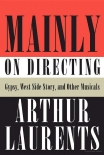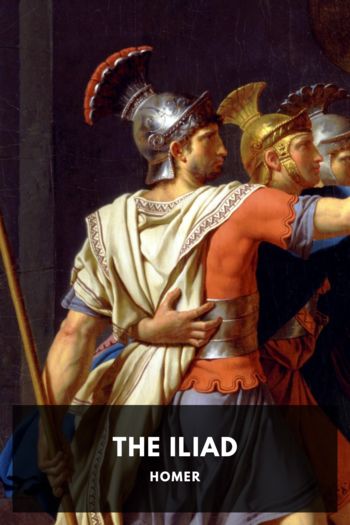Mainly on Directing, Arthur Laurents [best books for students to read TXT] 📗

- Author: Arthur Laurents
Book online «Mainly on Directing, Arthur Laurents [best books for students to read TXT] 📗». Author Arthur Laurents
It took time. Rose is a rewarding experience, but it takes a good deal of work before her skin fits. Luckily, we had a substantial period on the road. The necessity for that cushion is too often overlooked by directors because they're overconfident. Also, they don't want to trek to Dallas and St. Paul and all the oversized barns in between. By the time we came into New York, Tyne had gone even farther than I asked. Rose was hers, she was her Rose—savage, sexy, funny, common as dirt, and absolutely wonderful. And there was a bonus: we had become good friends.
The other big change to Gypsy occasioned by “Rose's Turn” began with a piece of advice given by Oscar Hammerstein during the Philadelphia tryout and unfortunately taken. It took fourteen years to rectify the damage.
Hammerstein was in Philadelphia for Steve Sondheim, who made anything but a secret of his gratitude to the mentor who guided his career. But it wasn't Steve Oscar was concerned about when he saw the show in Philadelphia; it was Ethel's bow.
Gypsy is so designed that Rose is on stage alone after a number ends only once in the entire evening. Thus there is only one place for the star to receive her applause and bow in direct response to her audience—at the end of “Rose's Turn.” As written, however, just as Rose finishes and starts to bow, Louise comes on applauding, thus killing the audience's hand before it can start and getting the final scene under way. This was exactly what we all wanted. Oscar, however, felt Ethel Merman wasn't getting the applause the audience had been waiting all night to give her; and because they had been waiting in vain, they were frustrated and didn't listen to the last scene.
No matter how grandiose theatre people appear to be or perhaps even are, out-of-town can make the most hubristic unsure of anything. Philadelphia had made us unsure of everything. Even that now legendary overture: at one point new orchestrators kept arriving like immigrants. In addition, this estimation that our failure to give Ethel her due destroyed the impact of the last scene was coming from Oscar Hammerstein, aka God. His advice was heeded: at the end of “Rose's Turn,” Rose left the stage while Ethel Merman took her bow. Bows. Endless. She brought the house down and the show went out the window. No one listened to the last scene; it was even suggested it be cut. Ethel was happy, the audience was happy, and if I wasn't, how could I complain? After all, Gypsy was a musical and Oscar Hammerstein was God.
Fourteen years later, I figured out how we could have our cake and eat it.
Ethel had refused to do Gypsy in London. The consensus at the time was that without her, there was no show. By 1973, the show had begun to acquire a reputation; London was eager to see it. Angela Lansbury, who had been living in Ireland helping her children grow up, came over to London to play Rose with me directing. Just the knowledge that an actress was going to be at the core of this Gypsy made it a very different Gypsy in the preproduction in my mind. If she hadn't been Rose, I doubt I would have found how to keep those bows to the audience at the end of “Rose's Turn” and justify them. What was needed wasn't just a musical star but a superb actress and a courageous one: Angela Lansbury.
The solution didn't come from examining the five-six-seven-eight of the “Rose's Turn” choreography or the lyric or even the subtext; it came from going back to why the number was in the show and where it was taking place. Directors of musicals don't do that often enough, not even when they're trying to figure out why a number doesn't work. They'll examine the number, what came before it, the way it's being performed, even where it is in the show, but not why it's in the show. It's the why that will reveal what the number is, or isn't but should be.
When I began to write Gypsy, I began at the end. The story of Gypsy Rose Lee obviously had to climax with the striptease that gave Louise her name. But even though the show was called Gypsy—contractually, it had to be—it was about Rose. Louises strip couldn't be the eleven o'clock number; Rose had to have that. Louise would have to settle for the ten-forty-five. The catch was that whatever number Rose did, it had to top the strip, which was more than just a striptease. It was the transformation of a scared, self-esteemless, awkward girl into a confident, sexy, sophisticated young woman—and one who is almost nude to boot. How does a middle-aged woman, star or no, top that?
The answer surprised me, it came so quickly. Louise's strip is topped by another strip, this one by a desperate, crazed middle-aged woman who doesn't actually strip because it's all taking place in the only place she could strip: in her recognition-hungry head. It's Rose's turn in the limelight, and high time, too. In her head, she is the greatest striptease queen in the world; in her head, she can bring down the house; in her head, she is the star of stars and can take all those bows. Challenge: how to show they are in her head?
The stage is ablaze with ROSE in huge lights. There's a huge spotlight on Rose as she bows to thunderous applause, even cheers. … And bows again. The spot goes with her as she moves to one side and bows again. Then the ROSE lights begin to drop out. She bows again. Now the ROSE lights are





Comments (0)